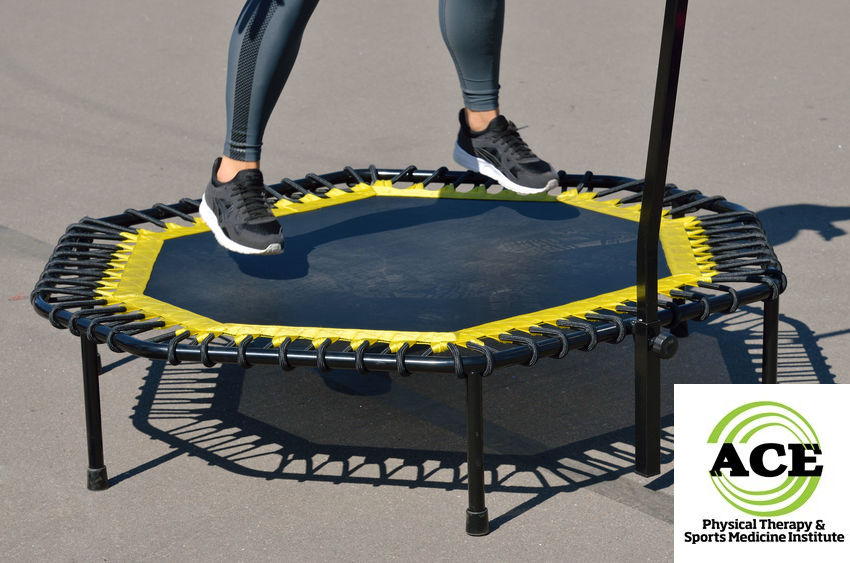EFFECTIVENESS OF TAPING IN CHRONIC ANKLE INSTABILITY

Tid Bits of Info
- Sprained ankles require a rest period to initiate the healing process but rarely do they require complete immobility.
- The most commonly sprained ligament in the ankle is the Anterior TaloFibular Ligament or ATFL.
- If a sprained ankle is severe, it is not uncommon to have bruising/black and blue coloring into the toes.
- The ankle joint is the most commonly sprained joint in the human body.
- If you sprain your ankle, seek the treatment from a Physical Therapist.
After repeated ankle sprains, many people commonly develop Chronic Ankle Instability (CAI). They may be walking, standing or participating in other activities and the ankle may easily “give way” and turn to the outer side. One popular treatment has focused on stabilizing ankle through the use of tape. Unfortunately, recent studies indicated that taping in chronic ankle instability may not help and it can lead to other problems. The best approach to CAI is a proper rehabilitation of the injured ankle.
Stability in the ankle is vital for movement without injury, and the ankle joint has static and dynamic stabilizing structures. Many muscles cross the ankle and insert into different structures in the foot that provide dynamic stability to the ankle. The ligaments of the ankle are leather-like structures that provide static stability. If these structures are injured or damaged, the stability of the ankle is compromised. Therefore, proper rehabilitation is essential to restore ankle stability.
Muscles are rehabilitated using specific exercises and therapeutic activities. During this time, the damaged ligaments need to be protected from motions that place too much force on them as new cells develop. Similar exercises and activities can be utilized to help facilitate the proper alignment of fibers and promote more cell growth.
During rehabilitation and in some instances tape is used prophylactically to stabilize an injured ankle or an attempt to prevent an injury from occurring. In recent studies, traditional taping, Fibular repositional taping and kinesiology (kineseo or K) taping were compared to assess their effect on an ankle that had been diagnosed with CAI.
One side effect of ankle taping is excess stress and strain is placed on the other joints of the lower extremity. The concern is that someone with CAI can stabilize their ankle with tape, but could make other joints in the lower extremity more susceptible to injury. The tape is thought to reduce the range of motion in the ankle joint, but this can force other joints to deal with extra stress and strain as they move through a greater range of motion to compensate for the taped ankle.
The results of these studies indicate that taping, regardless of tape or technique, does not change the dynamics of the ankle joint enough to cause compensatory motions in the other joints of the lower extremity. Unfortunately, balance testing with the involved ankle did not reveal a significant improvement in balance or stability of the ankle with any kind of tape.

CAI requires a thorough rehabilitation program to help stabilize the involved ankle. Many times, the static stabilizing ligaments are not able to fully heal therefore they are never able to completely stabilize the joint. When the ankle is injured, the nervous system produces a protective environment that helps to limit the severity of the injury. The neuromuscular input to the muscles is decreased and can be nearly lost during the acute phase of the injury. A major aspect of the rehabilitation process is to re-educate the nervous system and enable it to communicate with the musculature. The muscles are needed to provide dynamic stability to the injured ankle especially when the ligaments are not capable of providing static stabilizing forces.
If you hurt your ankle, it is recommended that you seek advice and treatment from a Physical Therapist. These licensed healthcare professionals are able to treat the injury acutely and develop a personalized, well-rounded exercise routine that will re-educate the entire joint and return the normal function to the injured ankle. The joint will be more susceptible to injury and possibly develop CAI if it is not rehabilitated properly. Being treated by a Physical Therapist does not require a doctor’s prescription, but certain insurance policies require you to have a referral from your general practitioner.
Taping in Chronic Ankle Instability is a common, well-accepted practice, but the results of numerous studies have indicated that this practice probably does not limit motion or stabilize the ankle joint and may add stress to other joints.
























